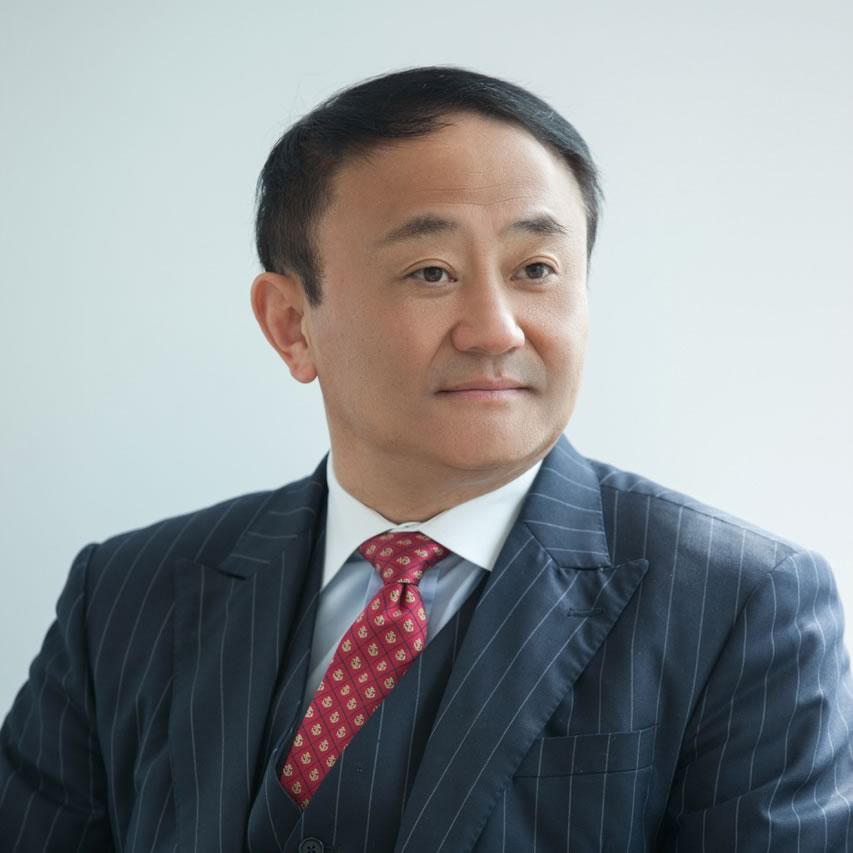BIN YUAN CHINA HEALTHCARE FUND
| ISIN | Class | Fx | NAV | Daily % | Date | MTD % | YTD % | LTM | ITD | |
|---|---|---|---|---|---|---|---|---|---|---|
| LU2413982427 | L1 | USD | 64.92 | -0.2% | 11/12/2025 | -2.51% | 20.02% | 15.89% | -35.08% | More Info |
Investment Managers

Ping founded Bin Yuan Capital in 2012 and started 2 strategies in 2013, Greater China Strategy and China A strategy. Both strategies have delivered very strong performance since then. Bin Yuan Capital has attracted large International Institutions that include pension funds, endowments and foundations, and family offices.
He has a BS from Northeastern University magna cum laude and an MBA from Fairfield University. Ping was a holder of the Chartered Financial Analyst designation.
Lily is also the research director for Bin Yuan Capital.

After GE Healthcare Lily was the analyst for the China Equity Strategy (AUM $470 million) and China A Shares (AUM $480 million), covering the healthcare, automotive, finance and property sectors.
Lily holds a Bachelor of Economics from Fudan University in Shanghai. Lily is also a holder of the Chartered Financial Analyst designation. She is a native of China and speaks fluent English and Mandarin.
Strategy
The investment objective of the Compartment is to provide long term capital growth, measured in USD, primarily through investment in equities and equity‐linked securities of Chinese healthcare companies, as defined hereafter.The Compartment strategy investment objectives are to identifying and invest in socially and environmentally aware healthcare-related companies that create long term corporate value by providing leading products and services.
Investment exposure will be achieved through equities and equity‐linked securities (such as shares, ADRs and GDRs). This also includes investment in China A‐Shares through the RQFII schemes and the Shanghai and Shenzhen ‐ Hong Kong Stock Connects. Investors should refer to the "Risk Warning" section for special risk considerations applicable to this Compartment. The Compartment may also invest in investment grade debt securities and convertible bonds, equities and equity related securities of companies outside Greater China [1] (but still remaining in Asia) and money market instruments. In the event of downgrading in the credit ratings of a security or an issuer relating to a security from “investment grade” to “non-investment grade”, the Investment Manager will seek to remedy this situation by selling the securities taking due account of the interest of the Compartment’s shareholders.The Compartment’s bottom-up, research driven investment process employs a proprietary score based screening process, supported by a tested database of financial analysis models.
The Sub-Fund may also invest IPO investments and private placements that are eligible under article 41(1) (a) to (d) of the 2010 Law up to 5% of its net assets.
This investment approach will be subject at all times to rigorous risk analysis and disciplined risk management procedures, including diversification, a conservative approach to liquidity, prudent exposure limits, and loss minimization procedures through stringent loss cutting practice. Investment risk will be assessed primarily by drawdown, but also by the volatility of returns.
The Compartment will not invest in companies which are included in the list of exclusion of the Norges Bank [2].
For the avoidance of doubt, the Compartment will not invest more than 10% of its net asset in UCITS and other UCIs (including open-ended exchange traded funds whose underlying belong to the Compartment's investment universe) (as defined under "Investment Restrictions" 1. (A) (1) d)).
In exceptional market circumstances and on a temporary basis, the Compartment may hold up to 100% of its net assets in liquid assets and investment grade debt instruments (including money market instruments).
Investments in ADRs and GDRs will be limited to 10% of the Compartment’s net assets.
Further, the investments in this Compartment shall remain subject to fluctuation in exchange rate as the underlying investment will predominantly be in RMB and HKD while the functional currency of the Share Class is USD. As such, 100% of the Compartment’s investments may be exposed to the foreign currency exchange risk.
The Compartment promotes certain environmental and social characteristics within the meaning of article 8 of SFDR but does not have a sustainable investment objective.
ESG is deeply integrated in the Investment Manager’s risk management framework and investment process. Poor ESG is the key factor in business risk, so at the screening stage, the investment strategy will eliminate companies that are not ESG compliant and qualified. The process is managed by Investment Manager’s in-house team who have accumulated many years of practical experience in the marketplace and were one of the earliest adopters of good ESG practices in China. ESG has been integrated and implemented from inception. The ESG rating system is reviewed on a continuous basis. The implementation of the selection criteria leads to the exclusion of at least 50% of potential investments at the initial ESG screening stage.
The Investment Managers have established an in-house rating system to quantify the qualitative elements of a company’s ESG risks and exposure, and how they manage those risks and exposures. Exposure is scored on a 1-5 scale, with 5 representing no exposure and 1 representing very high exposure.
Management is scored on 1-5 scale, with 5 representing the best practice management and 1 representing no efforts being made. A company with high exposure must also have very strong ESG management, whereas a company with limited exposure can have a more modest ESG approach. The strategy avoids companies with a low management rating below 3 if there are exposures.
30 ESG metrics are considered to get a comprehensive ESG score:
- The Environmental score consists of the following factors: Climate Change, Natural Resources, Pollution & Waste, and Environmental Opportunities.
- The Social score includes the following factors: Human Capital, Product Liability, Stakeholder Opposition, and Social Opportunities.
- The Governance score has the largest weight and consists of over 20 factors including Board Diversity, Ownership & Control, Conflict of Interest, Business Ethics and all other governance-related factors.
[In line with its [ESG Criteria], the Compartment promotes, among others, certain environmental characteristics and may invest in one or more underlying investments that contribute to climate change mitigation [and/or climate change adaptation]. Due to the unavailability of reliable external data on alignment of the Compartment’s assets with the Taxonomy Regulation, the investments underlying this Compartment cannot take into account the EU criteria for environmentally sustainable economic activities in relation to the environmental objectives of climate change mitigation [and/or climate change adaptation] for the time being and, for the avoidance of doubt, does not take into account the EU criteria for environmentally sustainable economic activities.
The “do no significant harm” principle applies only to those investments underlying this Compartment that take into account the EU criteria for environmentally sustainable economic activities. The investments underlying the remaining portion of this Compartment do not take into account the EU criteria for environmentally sustainable economic activities.
Governance
Investment Manager retains a record of companies’ governance history in the risk files, which tracks companies’ management stability, insider trading, dividend ratio, financial risk exposure, disclosure and other factors that would impact ESG rating. In addition to a company’s financial reporting the team look into local practices of management actions including pledged shares, exchangeable bonds, inappropriate merger and acquisition etc. to assess the real substance of the governance.Environmental & Social
Carbon Emission and Waste Emission are the major Environmental indicators. Labor Management and Health Safety are the major Social indicators of this product.Engagement
The strategy also aims to enhance the long-term performance of companies in which the strategy invests by engagement and / or voting. Engagement is integrated with the ESG work. All the progress of engagement cases is tracked, and the number and outcome of engagements will be reviewed in the quarterly ESG review. The progress or outcome of engagements are monitored and escalation strategies, such as reduction of portfolio exposure and divestment for the unsuccessful engagements, are planned and executed accordingly. The Investment Manager’s team pursue the full spectrum of engagement that ranges from exercise of proxy voting rights to direct discussions with the Chairman. Senior management are provided feedback generated from extensive due diligence of meeting staff and employees at different levels and different regions, and cross checking with both upstream and downstream players.- For the purpose of this Compartment, Greater China means People’s Republic of China, Hong Kong, Taiwan and Macao.
- The list of companies excluded by the Norges Bank is available on https://www.nbim.no/en/the-
fund/responsible-investment/ exclusion-of-companies/.

